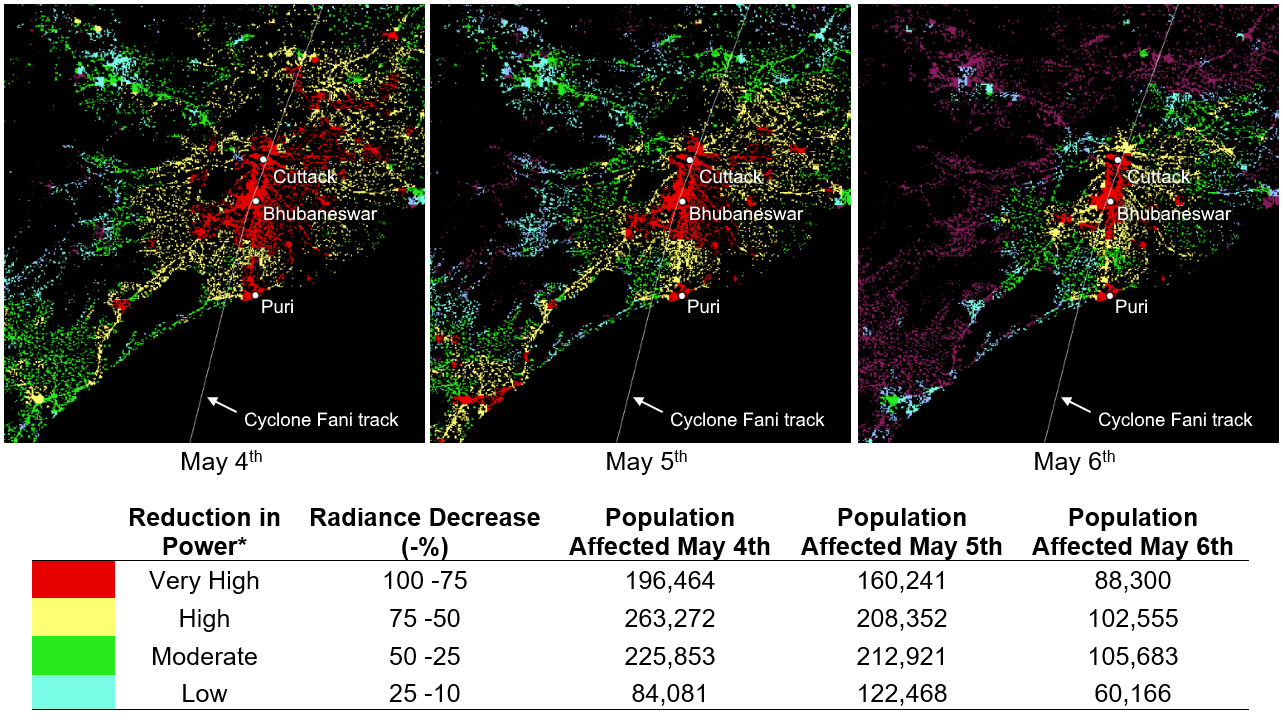ImageCat has conducted 2019 Tropical Cyclone Fani Power Restoration Analysis
14 May 2019

Image credit: NOAA
Tropical Cyclone Fani made landfall in the coastal state of Odisha, India, on the morning of Friday, May 3, 2019. The storm was equivalent to a category 3 hurricane when it made landfall and it created a path of damage and destruction as it moved inland and then northeast toward Bangladesh. The storm damaged not just homes, businesses, and crops but caused significant damage to the power infrastructure.
To aid the activities of Indian government agencies, emergency management and insurance professionals, ImageCat has conducted change detection analysis of night-time lights (VIIRS) for the Cuttack-Bhubaneswar-Puri region (see Figure 1 below). VIIRS daily mosaics for the post-event dates and the monthly average radiance composite of VIIRS was used as a pre-event baseline. The figure below indicates the percent reduction of night-time activity (negative values) compared to the pre-event values. The percentage of change detected is aggregated to 5 km grids for outlier or noise reduction. A significant amount of “Very High” power reduction indicated by 75-100% decrease in radiance (shown in red) is observed on May 4th, the day after first impact, followed by a restoration of night-time radiance on May 5th and May 6th which indicate possible power restoration.
In addition, WorldPop 2015[1] unadjusted population was used to estimate total population affected or exposed each day by the power reduction severity level (Very high to Low), see in table below.
Figure 1. Power Restoration Following Tropical Cyclone Fani
* Limitations. The above images reflect the VIIRS night-time lights radiance change (in percentage) for the dates given against the March 2019 VIIRS monthly composite centered around the Bhubaneshwar-Cuttack-Puri city regions of India where Tropical Cyclone Fani first made landfall. There are many naturally occurring phenomena (moonlight, hot/cold days, fires) that can affect the VIIRS radiance values other than human power/energy usage. Also, we cannot rule out that the reduction in VIIRS values is not due to the evacuation itself; as such reduction or no power usage.
For more information, please contact: Georgiana Esquivias at gre@imagecatinc.com

 562 628 1675
562 628 1675 




